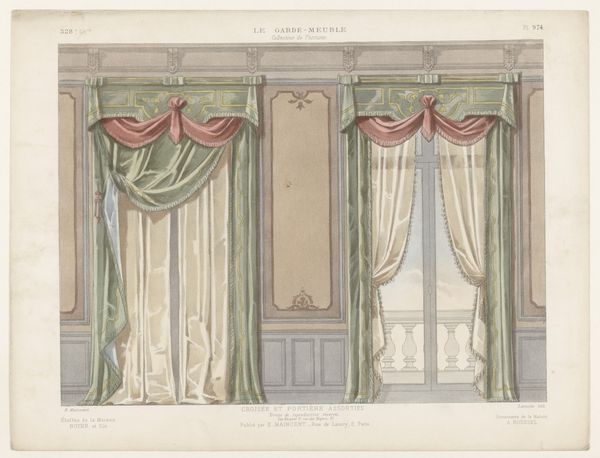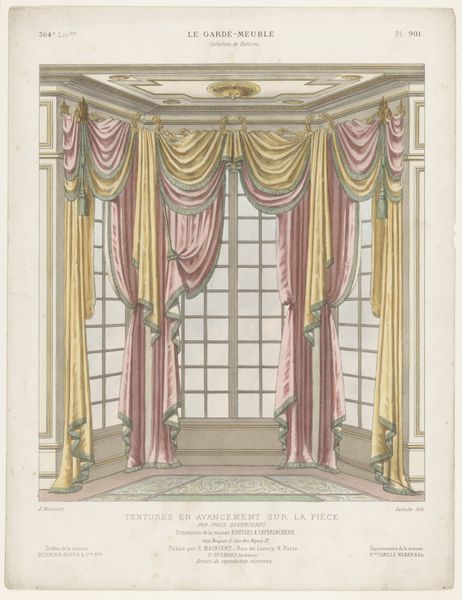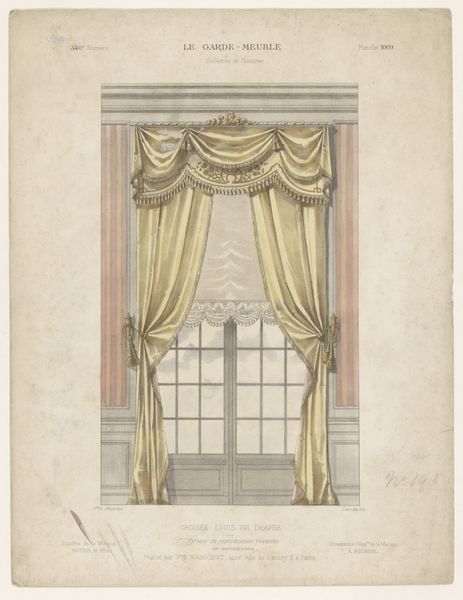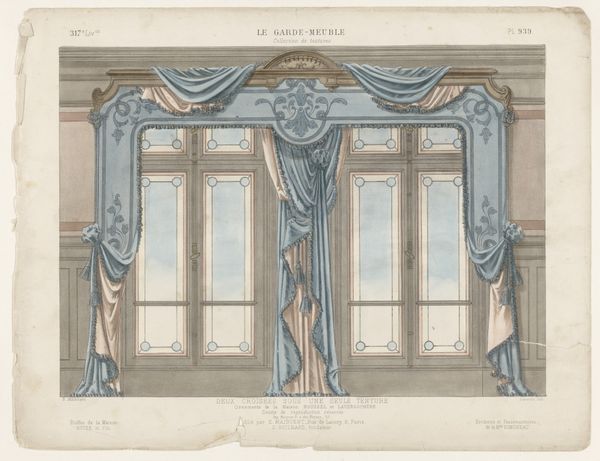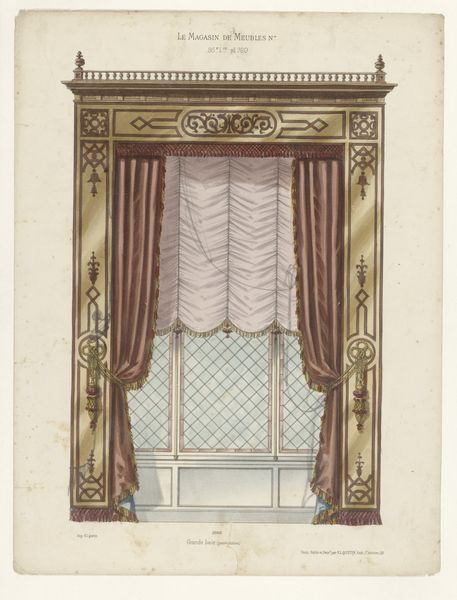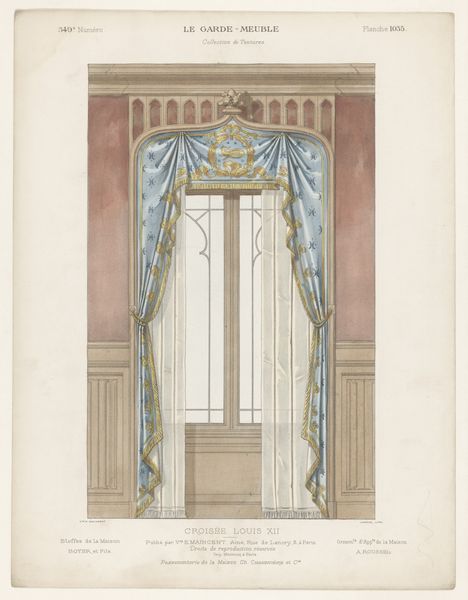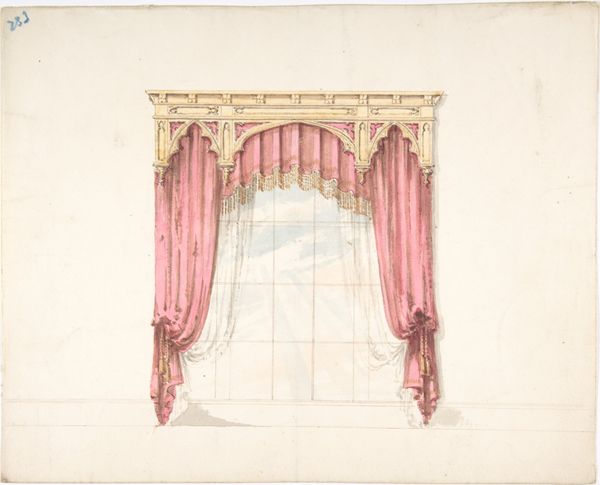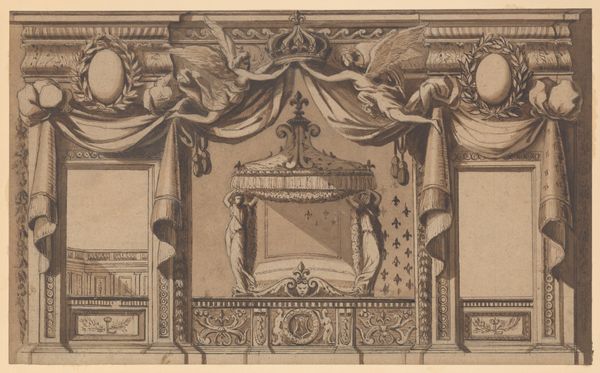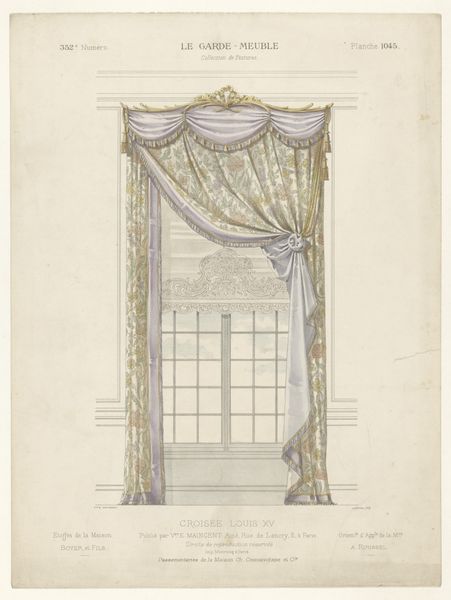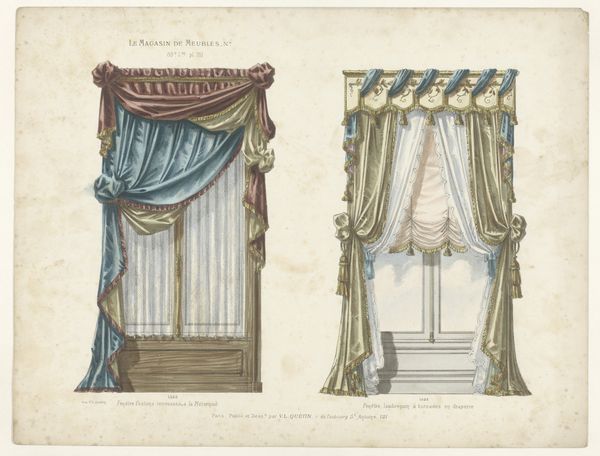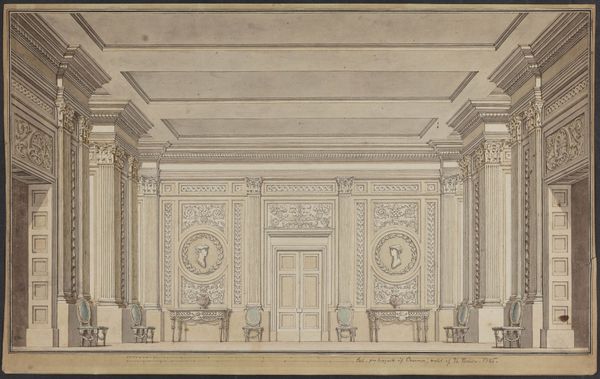
drawing, paper, watercolor, ink
#
drawing
#
water colours
#
paper
#
watercolor
#
ink
#
coloured pencil
#
line
#
watercolour illustration
#
decorative-art
#
watercolor
Dimensions: height 275 mm, width 358 mm
Copyright: Rijks Museum: Open Domain
Curator: What strikes me immediately is the quiet opulence of this interior scene. It exudes a formal, almost staged elegance. Editor: That's an interesting perspective. My eye is drawn to the potential exclusion signaled by these ornate doors. What kind of spaces, what sort of power, did they guard in late 19th-century society? Curator: A fair point, particularly as this is no casual sketch. What we’re viewing here, "Deuren met gordijn" – "Doors with Curtain" – from around 1885 to 1895 by Léon Laroche, isn’t just a pretty picture. It’s a carefully rendered watercolor, ink, and colored pencil drawing, likely for an interior design catalogue. Its very purpose was to sell an aspirational lifestyle. Editor: Ah, the decorative arts weaponized for class division! The precise draftsmanship—evident in the lines defining those door panels, and in the detailing of the swag—implies a certain societal rigidity, don't you think? This isn’t about shelter; it’s about display. The curtain becomes less about privacy and more about performance. Curator: I see that. These kinds of publications played a crucial role in shaping taste and aesthetic values for the emerging middle class. Notice the precise symmetry and balance – these elements reinforce societal norms and expectations of bourgeois domesticity. Editor: Indeed. It highlights how artistic production becomes entangled with systems of power. Consider also, who had access to such lavish draperies? Who benefitted from their production? I feel a sense of unease contemplating the unseen labor behind this image. Curator: It also shows us that architectural designs reflected larger societal values and power structures of the time. I would also venture to suggest that, through this image, one sees the rigid confines the elites placed upon themselves at the time. Editor: Absolutely. The doors themselves—closed, of course—seem to mock any ideal of permeable boundaries between social strata. In the age of inequality, these decorative gestures read as stark barriers. But they tell stories too, for the meticulous rendition here captures what power wanted to project as itself. Curator: It does invite deeper engagement with the historical context. Thank you for showing how much meaning and potential influence one decorative image holds. Editor: A sobering and necessary exercise. Thanks to you for sharing.
Comments
No comments
Be the first to comment and join the conversation on the ultimate creative platform.
